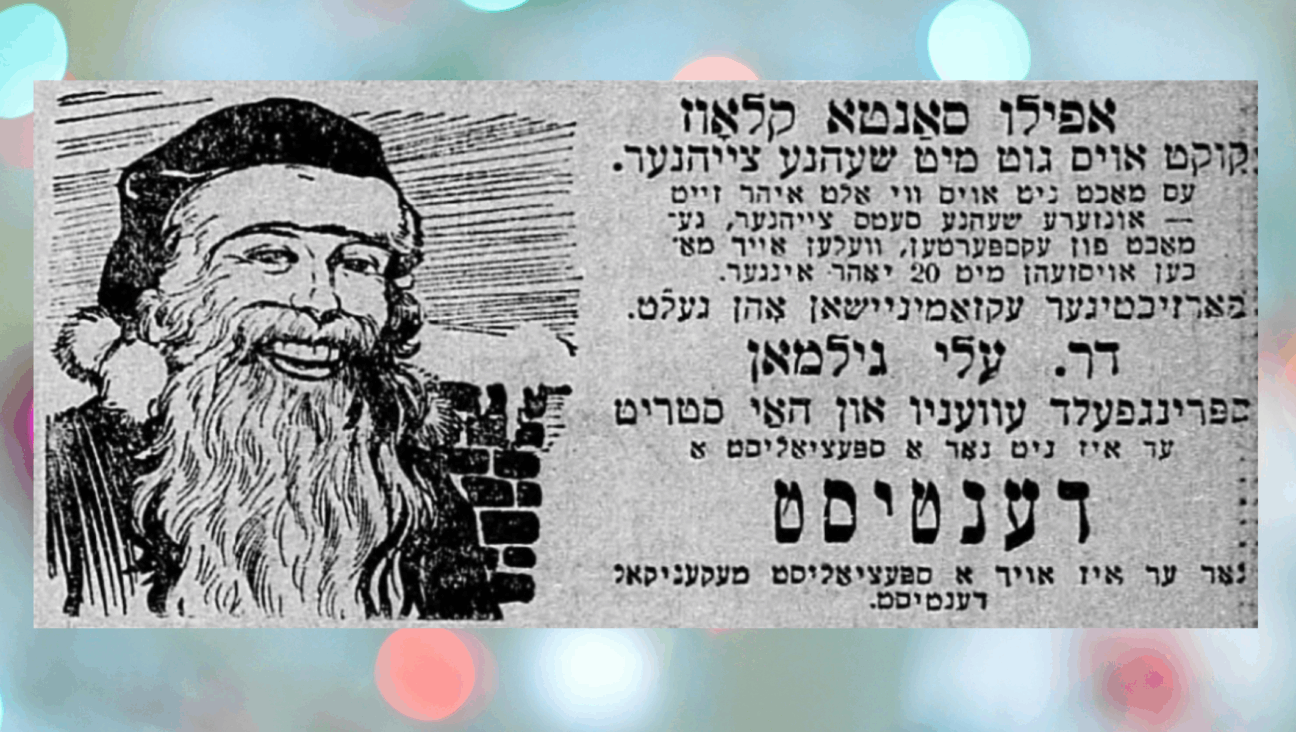A Jewish Doctor Who Put Nazis on the Couch
In 1946, Dr. Leon Goldensohn, a Jewish psychiatrist from Newark, N.J., spent six months conducting lengthy interviews with dozens of Nazis during the Nuremberg trials. Unfortunately, he died before he could write a book about the experience. But now, nearly 60 years after the trials, thanks to his brother, Goldensohn’s copious and detailed notes are the basis of a new tome, “The Nuremberg Interviews.”
“I tried to treat this book as a piece of unvarnished history from the moment I started collecting the material,” Eli Goldensohn, Leon’s brother, told the Forward. “There were no defendants, no witnesses who were not strongly questioned [by my brother] about the treatment of the Jews and about the Holocaust. This is one of the major areas he pushed to explore. I’m very proud of that.”
Leon Goldensohn served as psychiatrist for the U.S. Army’s 63rd Division in France and Germany during the war. After the war he was stationed at Nuremberg Prison and assigned the job of monitoring the mental health of dozens of Nazis who were either charged with carrying out the genocide of the Jews or were witnesses in the war crimes trials. The group included Rudolf Hoess, the Auschwitz commandant; Hermann Goering, commander of the German air force; Joachim von Ribbentrop, the foreign minister, and Julius Streicher, editor of the antisemitic journal Der Sturmer. Readers are not informed of why Goldensohn, who was 34 at the time, was chosen to look after these Nazis. He replaced another psychiatrist about a month after the trials began, and spent a little more than six months in the first half of 1946 visiting the prisoners nearly every day.
The psychiatrist’s assignment was to observe the men, not treat them, and there are few interpretations of the comments made in the interviews. But the interviews themselves are revealing. When Hoess talked candidly about sending an estimated 2.5 million people to their deaths in the gas chambers of Auschwitz, Goldensohn inquired as to whether it troubled him to kill children the same age as his own kids with his wife and children living there at the concentration camp. Hoess responded with a line that leaves readers shaking their heads: “I didn’t personally murder anybody. I was just the director of the extermination program.…”
Another stunning moment in the book occurs when Goering, who declared that “nobody knows the real Goering,” informed the psychiatrist that the genocide carried out by the Third Reich was at odds with his personal “chivalric code.” The air force commander told Goldensohn: “I revere women, and I think it unsportsmanlike to kill children.”
Moreover, the war criminals who were close to the Führer had a desire, it seems, to have their sense of what Hitler was all about become part of the historical record; accordingly, they opened up, to varying degrees, to Goldensohn, who became a sort of medium for the passing on of the information. Hans Frank, Hitler’s personal lawyer, spoke of the dictator’s abnormal sexual needs. Frank was convinced that Hitler turned to cruelty and sadism as a substitute for the love of a woman. Goldensohn noted that Ribbentrop, a difficult man to get to know, was engaged in a calculated effort to help build the myth of Hitler’s magnetism.
When he returned to the States, Goldensohn eventually settled in New Jersey. He gave a small number of lectures about the Nazis he looked after and had resolved to write a book about the experience but died at the age of 50 in 1961, leaving behind a wife and three children.
His widow, Irene, sent the notebooks and her husband’s typewritten versions of many interviews to her son Dan and her daughter Julia over a period of several years in the late 1970s and mid-1980s. In the mid-1990s the two siblings sent the material to their Uncle Eli in New York who had resolved to turn them into the book his brother had wanted to write.
The late psychiatrist’s children acknowledge that the book would not have seen the light of day had it not been for the efforts of their uncle. He retired five years ago at the age of 84 after a long career as a practicing neurologist, medical school professor and researcher. Once he had finished his own book, a large volume on the practice of electro-encephalography, Goldensohn went to work organizing, summarizing, researching and transcribing the Nuremberg interviews. All told, he spent more than five years on the project.
Eli Goldensohn believes the Nazis opened up to his brother because the Army psychiatrist was reserved and “fundamentally a gentleman. He was intelligent and he was able to meet them on any level.” But that hardly takes away from Dan Goldensohn’s enduring awe at his father, “this Jewish guy from Newark, in a cell with those guys.”
Still, those months of interviewing Nazi war criminals did take their toll on Leon Goldensohn, according to Eli. “What he heard hurt him terribly,” he said during a recent interview with the Forward.
Jon Kalish is a New York-based newspaper and radio journalist.
















